
Mires and Peat
Scope & Guideline
Bridging Science and Sustainability in Peatlands
Introduction
Aims and Scopes
- Ecological Assessment of Peatlands:
Research articles often emphasize the biodiversity and ecological health of peatland environments, assessing the impacts of anthropogenic activities and natural disturbances on species diversity and ecosystem functionality. - Restoration and Management Practices:
The journal frequently features studies on restoration techniques and management strategies aimed at rehabilitating degraded peatlands, including paludiculture and innovative land-use practices that support ecological balance. - Climate Change Impact Studies:
A significant focus is placed on understanding how climate change affects peatland carbon dynamics, including methane emissions and carbon storage potential, which are critical for global climate models. - Hydrological Studies:
Research often investigates the hydrology of peatlands, including water table dynamics, drainage effects, and hydrometeorological observations, which are essential for understanding peatland functionality. - Socio-Ecological Dimensions:
The journal also highlights the social aspects of peatland management, including community perceptions, livelihood strategies, and the integration of local wisdom into peatland restoration efforts.
Trending and Emerging
- Paludiculture and Sustainable Agriculture:
There is a growing emphasis on paludiculture, which promotes sustainable agricultural practices on peatlands. This trend highlights the importance of integrating agricultural productivity with peatland conservation. - Carbon Dynamics and Climate Mitigation:
Research focusing on carbon emissions, storage, and the role of peatlands in climate change mitigation has gained prominence, particularly as global awareness of climate issues increases. - Community Engagement in Restoration Efforts:
Emerging studies are exploring the role of local communities in peatland restoration, emphasizing participatory approaches and the importance of incorporating local knowledge and practices. - Technological Innovations in Peatland Research:
The use of advanced technologies such as remote sensing, unmanned vehicles, and 3D mapping for peatland assessment and monitoring is increasingly featured, showcasing the integration of technology in ecological research. - Ecological Responses to Land Use Changes:
There is a rising interest in understanding how land use changes, such as oil palm cultivation and drainage, affect peatland ecosystems, particularly regarding biodiversity and carbon dynamics.
Declining or Waning
- Historical Peatland Management Studies:
There has been a noticeable decrease in publications focusing on historical management practices of peatlands, suggesting a shift towards contemporary restoration and management strategies that prioritize current ecological challenges. - Purely Taxonomic Studies:
Studies that solely focus on the taxonomy of peatland species without addressing their ecological roles or conservation status have become less frequent, indicating a trend towards more integrative research approaches. - Local Case Studies without Broader Implications:
Research that presents localized case studies without exploring their broader implications for peatland science or management has diminished, reflecting a shift towards studies that provide insights applicable to wider contexts.
Similar Journals

BIOLOGICAL INVASIONS
Connecting science and conservation against invasive threats.BIOLOGICAL INVASIONS, published by Springer, stands at the forefront of ecological research, providing a vital platform for studies related to invasive species and their impacts on biodiversity and ecosystem dynamics. With an impressive impact factor reflecting its high-quality contributions, this esteemed journal has established itself in the Q1 category in both Ecology and Ecology, Evolution, Behavior and Systematics, highlighting its significance within these fields. The journal is indexed in the renowned Scopus database, ranking 113th out of 721 in Agricultural and Biological Sciences, and 82nd out of 461 in Environmental Science, affirming its importance and reach among ecological research. Since its inception in 1999, BIOLOGICAL INVASIONS has published cutting-edge research, fostering a deeper understanding of the dynamics of species invasions and their ecological consequences. While it does not currently offer Open Access, researchers, professionals, and students will find invaluable insights and the latest advancements in biodiversity conservation, ecosystem management, and invasion biology within its pages. This journal serves as an essential resource for those committed to addressing the challenges posed by biological invasions, making it a cornerstone in ecological literature.

Forest Ecosystems
Connecting research to conservation efforts.Forest Ecosystems is a prestigious open access journal published by KEAI PUBLISHING LTD, dedicated to advancing knowledge in the fields of forestry, ecology, and conservation. Established in 2014 and located in Beijing, China, this journal has rapidly gained prominence, achieving Q1 status in multiple categories, including Ecology, Evolution, Behavior and Systematics, and Forestry in 2023. With an impressive rank of 19 out of 174 in the Scopus category of Agricultural and Biological Sciences - Forestry, it stands in the 89th percentile, reflecting its influential contributions to the field. The journal fosters scholarly discourse and disseminates innovative research aimed at understanding forest ecosystems and their vital role in our environment. Offering a robust platform for researchers, professionals, and students, Forest Ecosystems ensures accessibility through its open access format, enabling a wider audience to engage with and benefit from cutting-edge research dedicated to the stewardship of forest resources.
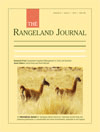
RANGELAND JOURNAL
Advancing Knowledge for Sustainable LandscapesRangeland Journal, published by CSIRO PUBLISHING, stands as a pivotal resource within the fields of ecology and environmental science. With an ISSN of 1036-9872 and an E-ISSN of 1834-7541, this journal has been disseminating critical research findings from 1998 to 2024, particularly focusing on the intricate dynamics of rangelands and their ecological significance. The journal is recognized for its contributions to the Q3 category in both Ecology and Ecology, Evolution, Behavior and Systematics, demonstrating its relevance in advancing scholarly discourse among researchers and professionals alike. Furthermore, with Scopus ranking it in the 57th percentile within its respective categories, the Rangeland Journal serves as an essential platform for fostering academic exchange and promoting sustainable management practices in rangeland environments. While currently not an open-access publication, it remains a vital institution for those dedicated to the stewardship and study of these unique landscapes.

Contemporary Problems of Ecology
Navigating Today’s Ecological Dilemmas with InsightContemporary Problems of Ecology, published by MAIK NAUKA/INTERPERIODICA/SPRINGER, is a premier journal committed to advancing research in the field of Environmental Science. Since its inception in 2008, this journal has carved a niche for itself in addressing the pressing ecological challenges of our times, catering to an audience comprising researchers, professionals, and students dedicated to the sustainability and environmental health of our planet. The journal is indexed in Scopus, with a current ranking of #165 out of 233 in the Environmental Science category, reflecting its contributions to the academic community, despite its position in the 29th percentile. With the latest quartile ranking placing it in Q3 for miscellaneous Environmental Science from 2023, the journal continues to be a vital resource for disseminating innovative research findings. Contemporary Problems of Ecology promotes open access scholarship and aims to foster a dialogue among experts, making it an essential platform for those looking to engage with contemporary ecological issues and solutions. The journal actively seeks to publish original research articles, reviews, and case studies that push the boundaries of our understanding of environmental systems.
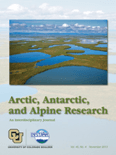
ARCTIC ANTARCTIC AND ALPINE RESEARCH
Unveiling the Secrets of Polar and Alpine EcosystemsARCTIC ANTARCTIC AND ALPINE RESEARCH, published by Taylor & Francis Ltd, is a leading academic journal focused on the comprehensive study of polar and alpine environments, with an emphasis on the ecological, geological, and climatic processes unique to these regions. With an ISSN of 1523-0430 and E-ISSN 1938-4246, this open-access journal has been a vital resource for researchers and practitioners since it embraced open-access publishing in 2018, fostering a wider dissemination of knowledge. Recognized in the 2023 Scopus rankings as a Q2 journal in both Earth-Surface Processes and Ecology, Evolution, Behavior and Systematics, it also attains a Q3 ranking in Global and Planetary Change, highlighting its significant impact and relevance in these fields. The journal covers a span of converged years from 1996, providing a rich archive of research that meets the evolving needs of those engaged in environmental science. By addressing pressing issues such as climate change, biodiversity, and ecosystem dynamics in extreme environments, ARCTIC ANTARCTIC AND ALPINE RESEARCH serves as an indispensable platform for scholarly exchange and collaboration among scientists, policy-makers, and educators committed to advancing our understanding of these critical areas.
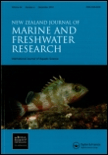
NEW ZEALAND JOURNAL OF MARINE AND FRESHWATER RESEARCH
Innovating Research for Sustainable Water ManagementNEW ZEALAND JOURNAL OF MARINE AND FRESHWATER RESEARCH, published by Taylor & Francis Ltd, stands as a distinguished platform for the dissemination of innovative research in the realms of aquatic science and ecology. With an ISSN of 0028-8330 and E-ISSN 1175-8805, this journal has been curating significant scientific contributions since its inception in 1967, continuing through to 2024. Recognized in the Q2 category across multiple relevant fields—including Aquatic Science, Ecology, and Water Science—this journal ranks notably in Scopus, with a 74th percentile for Ecology, Evolution, Behavior and Systematics, highlighting its impact and relevance within the scientific community. Though not an open-access publication, its rigorous peer-reviewed articles offer insights that resonate with researchers, professionals, and students who are passionate about advancing our understanding of freshwater and marine ecosystems. By fostering a collaborative space for ecological and environmental inquiries, the NEW ZEALAND JOURNAL OF MARINE AND FRESHWATER RESEARCH is essential for those aiming to contribute to the vital conversations around biodiversity, conservation, and sustainable management of aquatic resources.
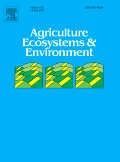
AGRICULTURE ECOSYSTEMS & ENVIRONMENT
Leading the Way in Agricultural and Environmental ScienceAGRICULTURE ECOSYSTEMS & ENVIRONMENT is a premier journal published by Elsevier, specializing in the fields of agronomy, animal science, and ecology. With an impressive impact factor reflective of its stature, it ranks in the top quartile (Q1) across three significant categories, highlighting its critical role in advancing research within the agricultural and environmental sciences. The journal serves as a vital platform for disseminating high-quality research that addresses the complex interactions between agriculture and ecosystems, providing insightful methodologies and findings that inform sustainable practices. As the journal continues to converge from 1983 and through to 2025, it remains committed to offering both traditional and innovative access options while contributing to the academic community's understanding of pressing environmental challenges. Researchers, professionals, and students are encouraged to engage with the journal's comprehensive content, which is positioned among the elite in its fields, having achieved top rankings in Scopus across relevant disciplines.
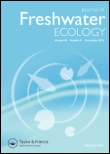
JOURNAL OF FRESHWATER ECOLOGY
Connecting researchers with the pulse of freshwater ecology.JOURNAL OF FRESHWATER ECOLOGY, published by Taylor & Francis Inc, is an esteemed source of research dedicated to advancing the understanding of freshwater ecosystems. Established in 1981, this Open Access journal has provided a platform for innovative studies and groundbreaking articles relevant to the fields of Aquatic Science and Ecology. With its HIndex reflecting a commitment to quality scholarship, the journal is currently classified in the Q3 category for both Aquatic Science and Ecology, Evolution, Behavior and Systematics, indicating its respectable impact within these disciplines. The journal ranks within the 45th percentile in Ecology and the 41st percentile in Aquatic Science on Scopus, highlighting its relevance to a global audience of researchers and practitioners. By facilitating unrestricted access to research findings since 2017, JOURNAL OF FRESHWATER ECOLOGY aims to enrich our understanding of freshwater systems and their conservation, making it an essential resource for those invested in ecological research and environmental sustainability.

NEW FORESTS
Fostering Collaboration for Healthier Forests.NEW FORESTS, published by SPRINGER, stands at the forefront of forestry research, delivering cutting-edge insights into forest science, management, and conservation. With an ISSN of 0169-4286 and an E-ISSN of 1573-5095, this esteemed journal has earned a distinguished reputation as it continues to contribute significantly to the field since its inception in 1986. As evidenced by its impressive ranking in the Q1 category for Forestry and being positioned at #32/174 in the Scopus Ranks for Agricultural and Biological Sciences, NEW FORESTS maintains an 81st percentile standing, emphasizing its influential role in advancing scientific discourse. The journal focuses on a diverse array of topics within the realm of forestry, making it an essential resource for researchers, professionals, and students eager to engage with contemporary developments and challenges in forest ecosystems. Although it is not an open-access journal, access to its articles can be facilitated through various academic institutions and libraries, ensuring that vital research is available to a broad audience. As we look toward the future, NEW FORESTS continues to strive for excellence, fostering dialogue and collaboration among scholars committed to sustainable forest management and restoration until at least 2024.
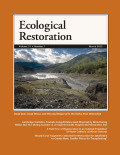
Ecological Restoration
Championing innovative practices in restoration.Ecological Restoration is a renowned journal published by University of Wisconsin Press, focusing on the critical and evolving field of ecological restoration. With its inception dating back to 1999 and converging through the years to 2024, the journal has carved out a significant niche, reflected in its recognition within the Q3 category of Nature and Landscape Conservation for 2023. Although the journal is not readily available as open access, it offers an essential platform for researchers, professionals, and students to publish their findings and collaborate across diverse topics relevant to environmental science and restoration practices. Ranked #123 out of 211 in its Scopus category and positioned in the 41st percentile, Ecological Restoration is dedicated to advancing the dialogue surrounding restoration techniques, ecological health, and sustainability efforts in response to ongoing global environmental challenges. This makes it a vital resource for anyone committed to enhancing the integrity of our natural ecosystems.